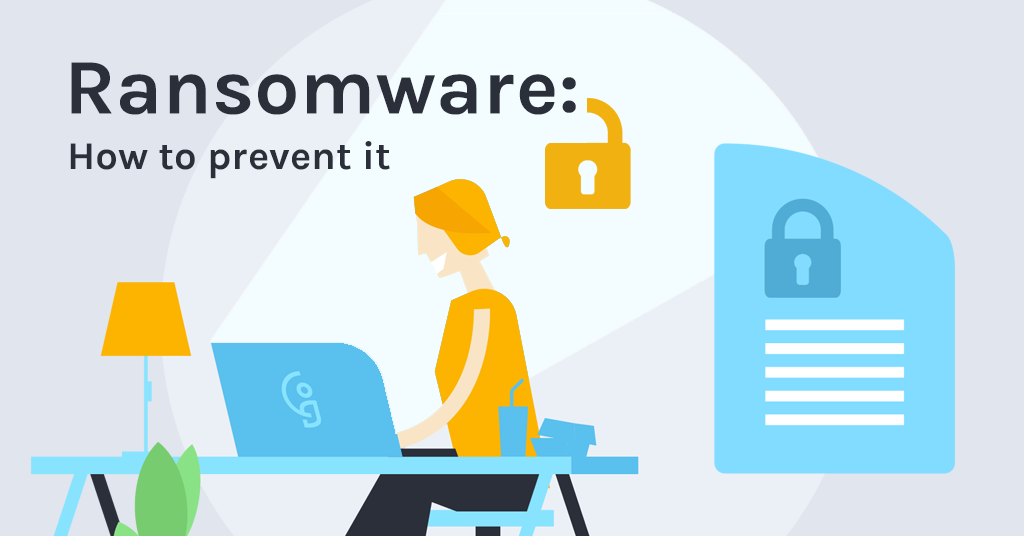Ransomware: How to Prevent It!
Learn what ransomware is, how it works, and the best strategies to protect your data from cyber threats.
Ransomware is a type of malicious software (malware) that cybercriminals use to extort money from victims. They do this by encrypting their data and demanding a ransom in exchange for the decryption key. This form of cyberattack has become increasingly prevalent and sophisticated in recent years. It targets individuals, businesses, and even government institutions. Understanding ransomware and how to prevent it is essential in today’s digital world. The consequences of an attack can be devastating.
How Ransomware Works
Ransomware typically infiltrates a system through phishing emails, malicious attachments, or compromised websites. Once inside, the malware encrypts files on the infected computer or network, rendering them inaccessible to the user. The victim is then presented with a ransom demand, usually accompanied by a countdown timer. This pressures them to pay a sum of money, often in cryptocurrency, to regain access to their data.
There are two primary types of ransomware:
- Crypto Ransomware: This form of ransomware encrypts personal files such as documents, photos, and videos, making them inaccessible without the decryption key. The attackers demand a ransom to provide the key. Without it, the data remains locked.
- Locker Ransomware: Instead of encrypting files, locker ransomware locks the user out of their device entirely. The system becomes unusable until the ransom is paid. While the data remains intact, the user cannot access it.
The Impact of Ransomware Attacks
The consequences of ransomware attacks can be severe for individuals. It may mean the loss of personal photos, financial records, and other important documents. For businesses, the implications are often more severe. This includes significant financial losses, damage to reputation, loss of customer trust, and potential legal consequences if sensitive data is compromised.
High-profile ransomware attacks have targeted hospitals, educational institutions, and even national infrastructure. This has led to disrupted services, delayed operations, and a loss of critical data. The cost of recovery can be immense, both in terms of the ransom payment (if made) and the expenses associated with restoring and securing systems.
How to Prevent Ransomware Attacks
Preventing ransomware attacks requires a multi-layered approach involving technical measures, user education, and robust incident response plans. Here are some of the most effective strategies to safeguard against ransomware:
1. Regular Backups
The most effective way to mitigate the impact of a ransomware attack is to maintain regular backups of critical data. These backups should be stored securely and offline. This ensures that they are not connected to the main network where ransomware could access them. If an attack occurs, the ability to restore data from backups eliminates the need to pay a ransom and ensures business continuity.
2. Keep Software Up to Date
Cybercriminals often exploit vulnerabilities in outdated software to gain access to systems. Regularly updating operating systems, applications, and security software is crucial in closing these security gaps. Automatic updates should be enabled where possible to ensure that the latest patches are applied without delay.
3. Use Robust Security Software
It is essential to have a comprehensive security solution that includes antivirus, anti-malware, and firewall protection. This helps in detecting and blocking ransomware before it can cause harm. Advanced security software often includes features like behaviour-based detection. This can identify and stop ransomware based on its actions, even if the specific strain is not yet recognised.
4. Employee Training and Awareness
Human error is one of the most common ways ransomware infiltrates systems. Training employees to recognise phishing emails, avoid clicking on suspicious links, and handle sensitive data securely is vital. Regularly conducting security awareness programmes and phishing simulations can help reinforce good practices and reduce the likelihood of an attack succeeding.
5. Implement Least Privilege Access
Limiting user permissions to only what is necessary for their role reduces the potential damage ransomware can cause. If a user with limited access is compromised, the ransomware’s ability to spread and encrypt files across the network is curtailed. Implementing least privilege access and regularly reviewing user permissions are key steps in securing a network.
6. Email Filtering and Scanning
Since phishing emails are a common vector for ransomware, deploying robust email filtering solutions can prevent malicious emails from reaching users’ inboxes. Email scanning tools that analyse attachments and links for signs of malware are also crucial in preventing ransomware from being delivered.
7. Network Segmentation
Segmenting networks into smaller, isolated sections limits the spread of ransomware. If one segment is compromised, the attacker’s ability to move laterally and access other parts of the network is restricted. This containment strategy is particularly important in large organisations with complex networks.
8. Use of Multi-Factor Authentication (MFA)
Implementing MFA adds an extra layer of security, making it more difficult for cybercriminals to gain unauthorised access to systems, even if they obtain login credentials through phishing or other means. MFA requires users to provide two or more forms of verification before they can access an account. This can be, for example, a password and a one-time code sent to a mobile device.
9. Incident Response Planning
Even with robust preventive measures in place, it is essential to have an incident response plan ready in case a ransomware attack occurs. This plan should include steps for isolating the infected system, assessing the extent of the damage, restoring data from backups, and communicating with stakeholders. Having a well-prepared response plan can significantly reduce downtime and minimise the impact of an attack.
Should You Pay the Ransom?
One of the most contentious issues in a ransomware attack is whether to pay the ransom. Law enforcement agencies typically advise against it, as paying does not guarantee that the attacker will provide the decryption key. Additionally, paying the ransom encourages further attacks and funds criminal activities.
However, some organisations, particularly those without adequate backups, may feel they have no choice but to pay to recover critical data. It is a decision that must be made carefully, considering the potential consequences and the likelihood of recovery without payment.
Final Thaughts
Ransomware poses a significant threat in the digital age, with the potential to cause severe financial and reputational damage to individuals and organisations alike. Understanding how ransomware works and implementing robust preventive measures are essential to minimise the risk of an attack. Regular backups, up-to-date software, employee training, and strong security protocols are critical components of a comprehensive defence strategy.
By staying vigilant and proactive, individuals and businesses can protect themselves from the growing menace of ransomware and ensure that their data remains secure.













